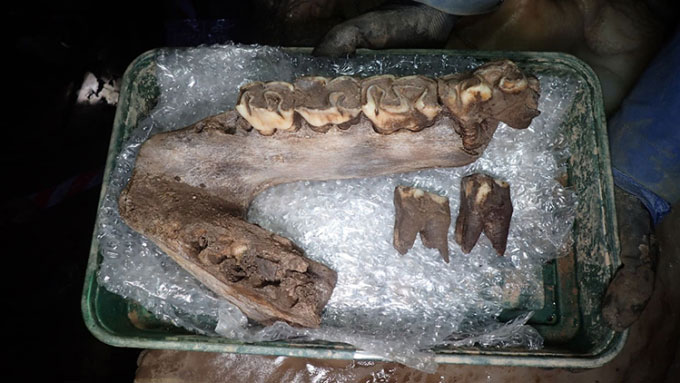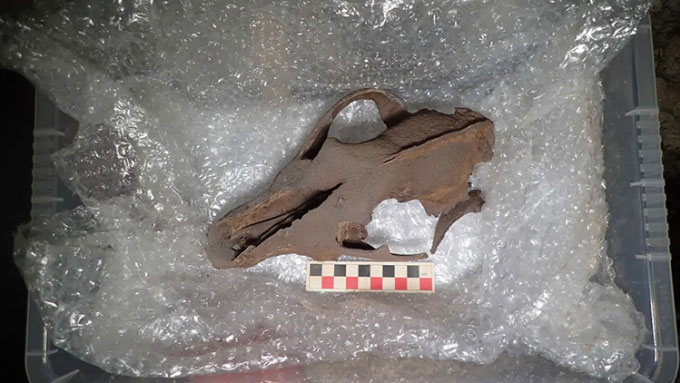British Scientists Announce Discovery of Mammal Bone Collection in a Cave in the Southwest
Bone fragments discovered during the construction of a new settlement in Sherford, Devon, provide a glimpse into an ancient ecosystem from 30,000 to 60,000 years ago during the Last Ice Age, reported Heritage Daily on February 6.
A research team from the archaeological company Orion Heritage and AC Archaeology unearthed a significant number of tusks, molars, jawbones, skulls, and other bone fragments from a variety of mammals—including woolly mammoths, woolly rhinoceroses, wolves, hyenas, horses, reindeer, mountain hares, shrews, and red foxes—in the same cave.

Jaw fragment still retaining some teeth of a woolly mammoth. (Photo: AC Archaeology)
Post-excavation analysis in the laboratory is still ongoing, and it is anticipated that more small mammal species will be identified within this rare bone collection.
Scientists are uncertain whether all the animals found in the cave coexisted in the same time and place. One hypothesis suggests that some species may have accidentally fallen into the pit and could not escape, while other scavengers and predators followed and met a similar fate. It is also possible that the animals died elsewhere, and their bones drifted into the area over time.

Nearly intact skull of a wolf. (Photo: AC Archaeology)
“This is an important discovery of national significance. Finding such a diverse collection of bones in Devon gives us a glimpse into the species that roamed the UK during the Ice Age tens of thousands of years ago, as well as a better understanding of the environment and climate at that time. We are thrilled that this important part of history will be preserved for future generations,” emphasized Duncan Wilson, Chief Executive of Historic England.


















































